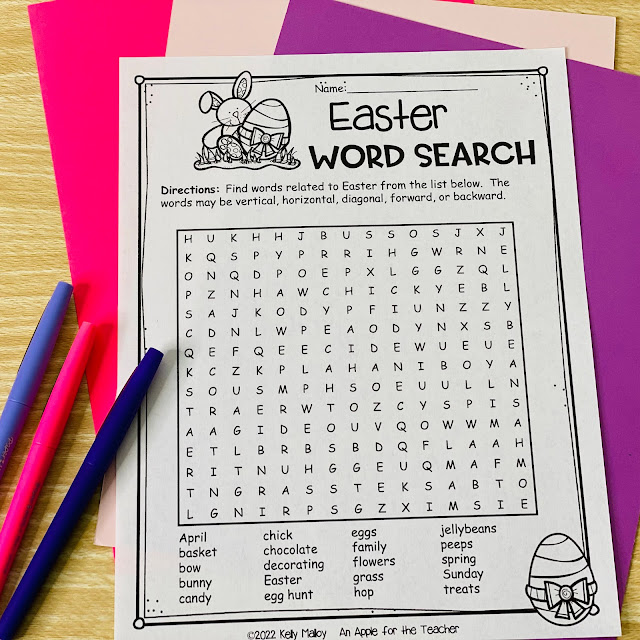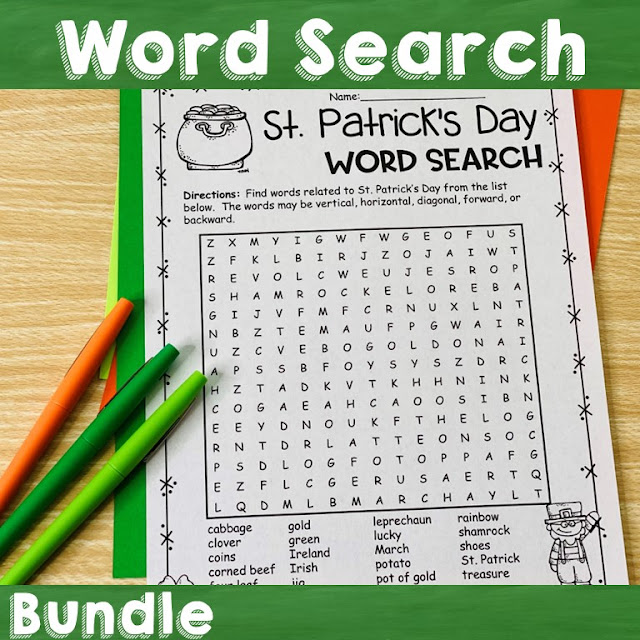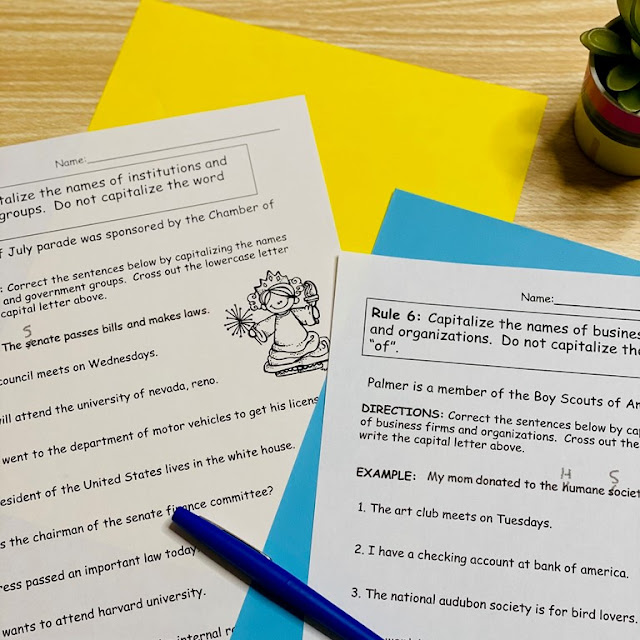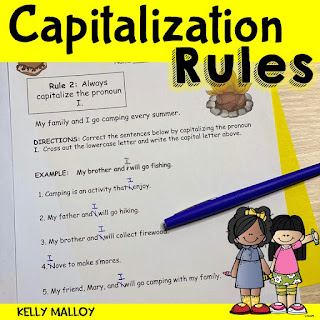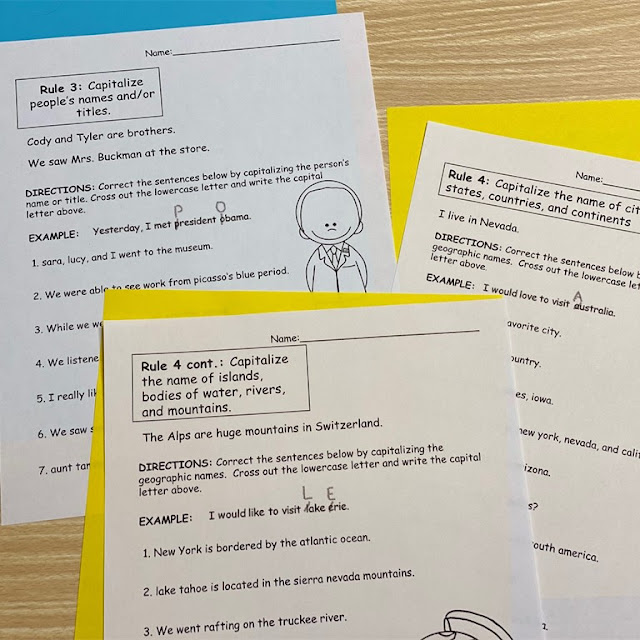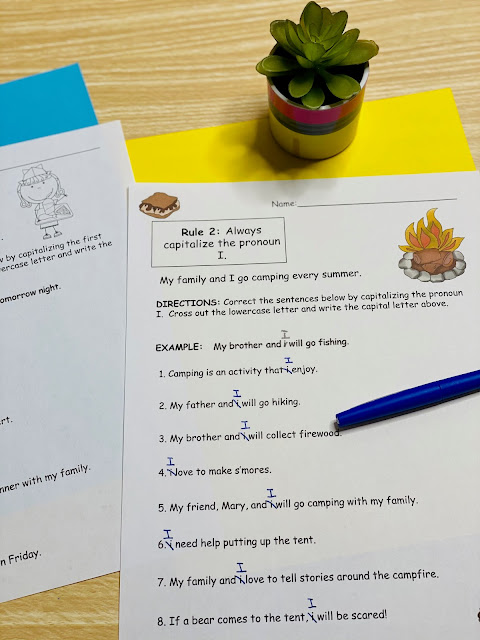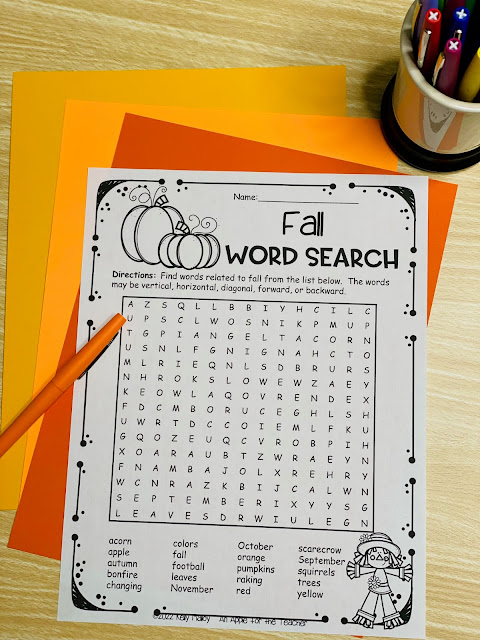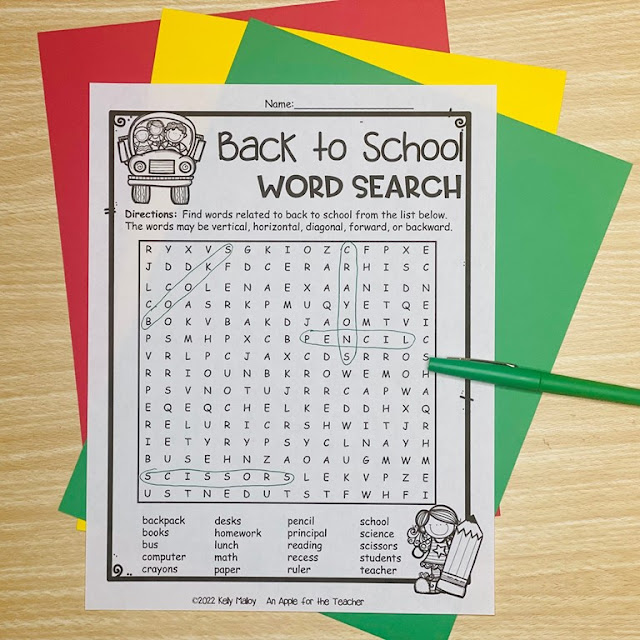Capitalization rules are an essential component of language arts education. Teaching these rules to elementary students not only helps them communicate effectively but also lays the foundation for strong writing skills. In this blog post, I'm going to share some effective strategies and engaging activities that you can use in your classroom to impart capitalization rules in a fun and memorable way.
This post contains affiliate links. I earn a small commission each time someone makes a purchase using one of my links, which helps to support the blog. All opinions are my own and I only promote brands and products that I have used myself and truly love.
Start with the Basics of Capitalization
Before diving into the intricacies of capitalization, it's crucial to ensure that students understand the basic concept. Begin by explaining that capital letters are used at the beginning of sentences and for proper nouns (names of people, places, and things).
Create interactive lessons that demonstrate the difference between capital and lowercase letters using visually appealing materials like flashcards, charts, and online games like these.
Introduce Different Capitalization Rules
Once students grasp the basics, introduce them to various capitalization rules, such as:
Capitalizing the first word of a sentence
Capitalizing the pronoun "I"
Capitalizing proper nouns
Capitalizing titles and headings
Capitalizing the days of the week, months, and holidays
Capitalizing the names of books, movies, and other works
Divide these rules into separate lessons, using real-world examples to illustrate each one. Encourage students to create their own sentences using the newly learned rules.
Interactive Games and Activities for Practicing Capitalization
Engaging activities can make learning capitalization rules enjoyable for elementary students:
Capitalization Hunt: Provide students with a passage or short story and have them identify and correct instances where capitalization is needed.
Capitalization Sort: Create a sorting activity (or grab this freebie) where students categorize words or sentences into "Needs Capitalization" and "Doesn't Need Capitalization" columns.
Capitalization Relay: Divide the class into teams and have them race to write sentences on the board with correct capitalization based on given prompts.
Story Building: Collaboratively create a story on the board, allowing students to suggest sentences. As a class, decide where capitalization should be used.
CapitalizationVisual Aids
You can grab this freebie here.
Mnemonics and visual aids can help students remember capitalization rules more effectively:
Create memorable acronyms or phrases to represent each rule (e.g., "CHIPS for Calendar words, Holidays, I by itself, Names of People, Places, and Things, and Beginning of Sentences).
Design posters with captivating visuals that remind students when to use capital letters.
Writing Exercises for Capitalization
Incorporate regular writing exercises into your lessons. Provide prompts that require students to apply the capitalization rules they've learned. Encourage them to write short stories, journal entries, or even letters using proper capitalization.
Peer Review and Editing of Capitalization
Teach students the importance of peer review and editing for proper capitalization. Have them exchange written work with a partner and identify any instances of incorrect capitalization. This not only reinforces learning but also cultivates collaborative skills.
Teaching capitalization rules is a vital aspect of elementary language arts education. By employing a combination of interactive activities, visual aids, mnemonics, and writing exercises, elementary teachers can make this learning experience engaging and effective.
Remember that consistency and patience are key. As students internalize these rules, they'll develop stronger communication skills that will serve them well throughout their academic journey and beyond.











